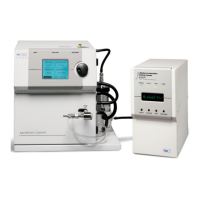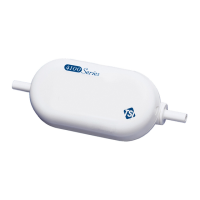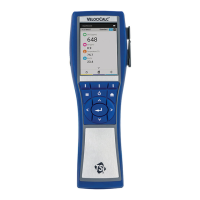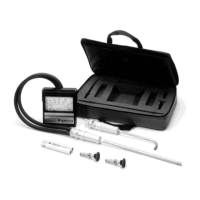B-1
APPENDIX B
Theory of Operation
The principle of the Model 3080 Electrostatic Classifier with any
DMA is based on the monotonic relationship between electrical
mobility and particle size with singly charged particles. To ensure a
fixed percentage of particles carrying one unit of charge, the
particles are introduced to a bipolar charge (in a Model
3077A/3077 Neutralizer) where they undergo frequent collisions
with bipolar ions. This process is known as bipolar charging or
“neutralization.” As a result, an equilibrium charge state is
obtained, with known percentages of particles carrying no charge, a
single charge, or multiple charges of both positive and negative
polarities. These aerosol particles are then classified with the
differential mobility analyzer and measured by a Condensation
Particle Counter or an Aerosol Electrometer. The mobility
distribution, and hence size distribution, can be determined from
the measurement.
History
Electrical mobility techniques have been used to measure the size
distribution of aerosols since the work of Rohmann [1923]. The
differential mobility analyzer (DMA) was developed and used
initially for electrical mobility measurements of submicrometer
particles [Hewitt, 1957].
Liu and Pui [1974] used the differential mobility analyzer with a
bipolar charger to produce monodisperse aerosols of known size.
Their design was used to develop the first commercial DMA, the TSI
Model 3071 Electrostatic Classifier. Not long after the development
of the DMA, Knutson and Whitby [1975] incorporated the DMA into
a particle-sizing system. The commercial system is known as the
Model 3932 Differential Mobility Particle Sizer (DMPS).
The interface hardware was developed by TSI Incorporated.
Knutson [1976] developed a data inversion technique for obtaining
the initial aerosol size distribution based on the measured particle
mobility distribution. A data inversion technique similar to
Knutson’s was used in the commercial DMPS/C data reduction.
The data inversion technique is based on the work of Plomp, et al.
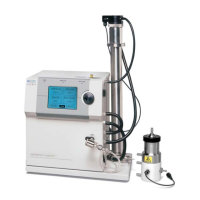
